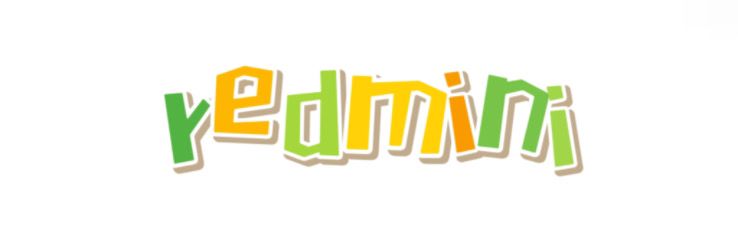Why Do You Need Yarn?
Yarn is an essential material for a wide range of crafts and textile projects, from knitting and crocheting to weaving and embroidery. Whether you're a seasoned crafter or a beginner, yarn plays a crucial role in creating everything from cozy scarves to intricate blankets and home décor items. This article will explore why yarn is an indispensable material, including its functions, advantages, disadvantages, user experiences, and pricing information.
Key Functions of Yarn
Crafting and Knitting: Yarn is the primary material used in knitting and crocheting. With yarn, you can create various clothing items such as sweaters, hats, scarves, and socks. Its versatility makes it perfect for both simple and complex designs, allowing crafters to express their creativity.
Home Décor: Yarn is also commonly used in making home décor items like blankets, pillows, wall hangings, and rugs. These items add warmth, texture, and a personal touch to any room. You can choose different types of yarn to match your style, whether it's modern, bohemian, or rustic.
Weaving and Macramé: For those interested in weaving or macramé, yarn provides the necessary structure and flexibility to create both functional and decorative pieces. From wall tapestries to plant hangers, yarn helps you craft beautiful, intricate designs.
Repair and Embellishment: Yarn can be used for mending clothing, stitching decorative patches, or adding embellishments to existing garments and accessories. This makes it a great option for people interested in sustainable fashion or upcycling old clothes.
Advantages of Yarn
Variety of Textures and Colors: Yarn comes in an endless array of textures, thicknesses, and colors. Whether you want soft merino wool for a winter sweater or a vibrant cotton yarn for summer accessories, the options are virtually limitless. This variety makes yarn ideal for personalized crafting projects.
Customizable Crafting: Yarn allows crafters to control the size, color scheme, and design of their projects. You can easily customize your work to fit your needs and preferences, making each creation unique.
Durability: High-quality yarns, such as those made from wool or acrylic, are durable and long-lasting. They can withstand wear and tear, making them suitable for projects like clothing and blankets that will be used frequently.
Eco-Friendly Options: Many brands offer eco-friendly yarns made from organic cotton, recycled fibers, or natural wool. These options are great for those who want to reduce their environmental impact while enjoying their crafting hobby.
Disadvantages of Yarn
Cost of High-Quality Yarn: While inexpensive yarns are widely available, premium yarns made from materials like alpaca or silk can be quite costly. The price may be a barrier for those on a budget, especially for large projects requiring multiple skeins.
Time-Consuming: Projects involving yarn, such as knitting or crocheting, can be time-consuming, especially for beginners or those working on intricate patterns. This requires patience and dedication to complete larger projects.
Learning Curve: While using yarn for crafts like knitting and crocheting can be rewarding, there is a learning curve. Beginners might find it challenging to master certain stitches or techniques, but with practice, these skills can be developed.
User Experience
Crafters who use yarn often rave about its versatility and the joy of creating handmade items. Many users enjoy the calming, meditative process of knitting or crocheting and appreciate how yarn can be used to make personalized gifts for friends and family.
For beginners, the ease of working with yarn often depends on the type chosen. Soft and chunky yarns, like acrylic or wool blends, are popular with newcomers as they are easier to handle and produce quicker results. Advanced crafters prefer more delicate yarns like silk or bamboo for intricate designs, appreciating the smooth texture and beautiful finish they provide.
However, users sometimes report frustration when working with certain types of yarn, especially those that are too slippery or prone to splitting. This can lead to mistakes or uneven stitches, requiring more attention during the crafting process.
Pricing and Value for Money
Yarn comes in a wide price range, depending on the material, brand, and quality. Basic acrylic yarn can start at as little as $3 per skein, making it a budget-friendly option for beginners or those working on large projects. On the other end of the spectrum, luxury yarns made from fibers like cashmere, silk, or alpaca can range from $10 to $30 or more per skein.
Budget-Friendly Options: For beginners or casual crafters, affordable yarns such as acrylic or cotton blends offer good value for money. These yarns are durable, widely available, and come in a variety of colors and textures, making them suitable for most projects.
Mid-Range Options: Wool blends, bamboo, and organic cotton yarns typically fall into the mid-range category, costing between $5 to $15 per skein. These yarns are softer and more comfortable for wearables, offering a balance between price and quality.
Premium Yarns: High-end yarns made from specialty fibers, such as merino wool or alpaca, can be a bit pricier but are highly sought after for their softness, durability, and luxurious feel. These are ideal for crafting heirloom-quality pieces or special gifts.
Conclusion
In conclusion, yarn is a must-have material for anyone interested in crafting, knitting, crocheting, or weaving. It offers a wide variety of uses, from creating clothing and home décor to repairing and embellishing existing items. The versatility of yarn, combined with its broad range of textures and colors, allows crafters to produce unique, personalized projects. While the cost of high-quality yarn can be a consideration, its benefits in terms of durability, creativity, and eco-friendly options make it a worthwhile investment. Whether you're a beginner or an experienced crafter, yarn will always be an essential tool in your creative toolkit.
183
0
0
Next: None

Comments
All Comments (0)